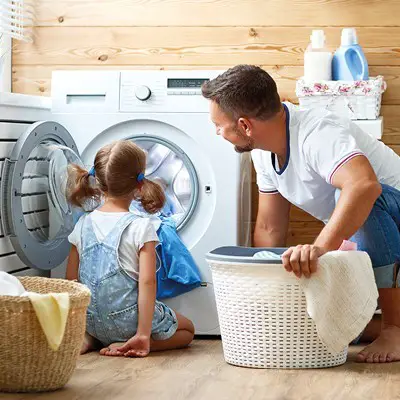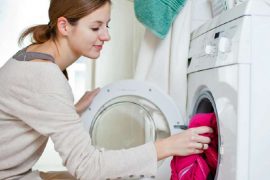How to Clean Your House After Lice
How to clean your house after lice?.
You’ve treated the children, and they’re now head lice free. Now, how do you make sure your home is too? The good news is that lice can’t live away from a human host for longer than 24 hours. So if any lice or nits (eggs) have fallen or been brushed from your children’s hair, they are probably dying anyway. However, there are a few things you can do to ensure they don’t have the chance to start another infestation.
How to clean your house after lice – Here’s What to do.
So if you don’t need to get professional cleaning and clear out of your house for two weeks, what do you need to do?
First
Gather up all of the clothing and bed linens that were in contact with the infected person during the two days PRIOR to treatment for the head lice.
Here is the CDC procedure, “Machine wash and dry clothing, bed linens, and other items that the infested person wore or used during the two days before treatment using the hot water (130°F) laundry cycle and the high heat drying cycle. Clothing and items that are not washable can be dry–cleaned,” OR “store in a plastic bag for two weeks.”
The washing with high heat will take care of the lice. The two-week time frame only comes in for items that can’t go through the high heat wash and dry procedure. Two weeks in a plastic bag will ensure that the lice have died off.
Second
Deal with the combs, brushes, etc. that were used or could have been used. Cleaning these implements is easy, so be safe rather than sorry and clean them all. The CDC recommends that you, “Soak combs and brushes in hot water (at least 130°F) for 5–10 minutes.”
Use a big pot on the stove and a kitchen thermometer to make sure you have a high enough temperature. Set a timer, plop your brushes and combs in hot water, and let the time and heat do the work for you.
Third
Vacuum the floors where the person with lice has been. Using a vacuum on the floors will gather up the lice and eggs. Lice die quickly when they can’t feed, and the eggs need the heat from the human body to hatch. Here is what the CDC says, “… the risk of getting infested by a louse that has fallen onto a rug or carpet or furniture is very low.
Head lice survive less than 1–2 days if they fall off a person and cannot feed; nits cannot hatch and usually die within a week if they are not kept at the same temperature as that found close to the human scalp.”
Cleaning your home

Lice live in hair, not the home.
Head lice aren’t a sign of an unclean environment and are almost always transferred from one child to another via direct head to head contact. (Lice don’t discriminate between clean or dirty hair either.) The chance of your children picking up lice or nits from objects around the home is slim.
Therefore you don’t have to wash everything after an infestation. However, if several children in the house have had lice, or there have been multiple outbreaks, it’s a good idea to take some necessary precautions.
If it’s been in contact with your child’s head in the last 24 hours, wash it.
This includes pillows, sheets, towels and pyjamas. Hairbrushes and combs should also be soaked in boiling water, to kill any lice or nits. Hair ties and hats can also be washed, or sealed in plastic bags for several days to ensure any nits or lice have died before re-use.
To speed up the process, place sealed containers in the freezer for a couple of hours. Plush or stuffed toys that can’t be washed can be placed in a dryer on high heat for 30 minutes or sealed in bags for a couple of days.
Vacuum couches and car seats.
Any places where your child rests his or her head should be given a quick vacuum to pick up stray lice or eggs. If you have a section of carpet or a rug where your children frequently sit or lie, you might want to give that a quick clean too.
What about your pets?
There’s no need to worry about Ginger or Rex reinfesting your children. Your pets can’t carry or transmit human head lice.
Avoid pesticide sprays.
After a nasty infestation, you may be tempted to have your home fumigated with an anti-lice pesticide. However, the harsh chemicals they contain can do more harm than good, especially if someone in your family has a respiratory condition.
If your child has head lice again?
Focus treatment on the hair, not the home. Licener Head Lice Treatment kills lice and eggs with just one treatment in only 10 minutes, with no combing required to be effective.
Breath a sigh of relief
Lice are not invincible! You can follow an inexpensive and straight forward procedure to deal with cleaning your home.
Cleaning
A common misconception about treating people and homes that have had contact with lice is that the only way to get them out of the house is to put everything in the home that is made of any type of fabric in plastic bags for two weeks and have the furniture and carpets cleaned.
Not necessary! Here is what the Centers for Disease Control and Prevention (CDC) says about home cleaning when lice are found: “Head lice do not survive long if they fall off a person and cannot feed. You don’t need to spend a lot of time or money on housecleaning activities.”
Here is the CDC’s recommended procedure: “Machine wash and dry clothing, bed linens, and other items that the infested person wore or used during the two days before treatment using the hot water (130°F) laundry cycle and the high heat drying cycle. Clothing and items that are not washable can be dry–cleaned,” OR “store in a plastic bag for two weeks.”Also, “Soak combs and brushes in hot water (at least 130°F) for 5–10 minutes.”
The CDC recommends vacuuming the floor where the person with lice has been, “However, the risk of getting infested by a louse that has fallen onto a rug or carpet or furniture is meager. Head lice survive less than 1–2 days if they fall off a person and cannot feed; nits cannot hatch and usually die within a week if they are not kept at the same temperature as that found close to the human scalp.”
Now you know. “Spending much time and money on housecleaning activities is not necessary to avoid reinfestation by lice or nits that may have fallen off the head or crawled onto furniture or clothing.” Phew!

